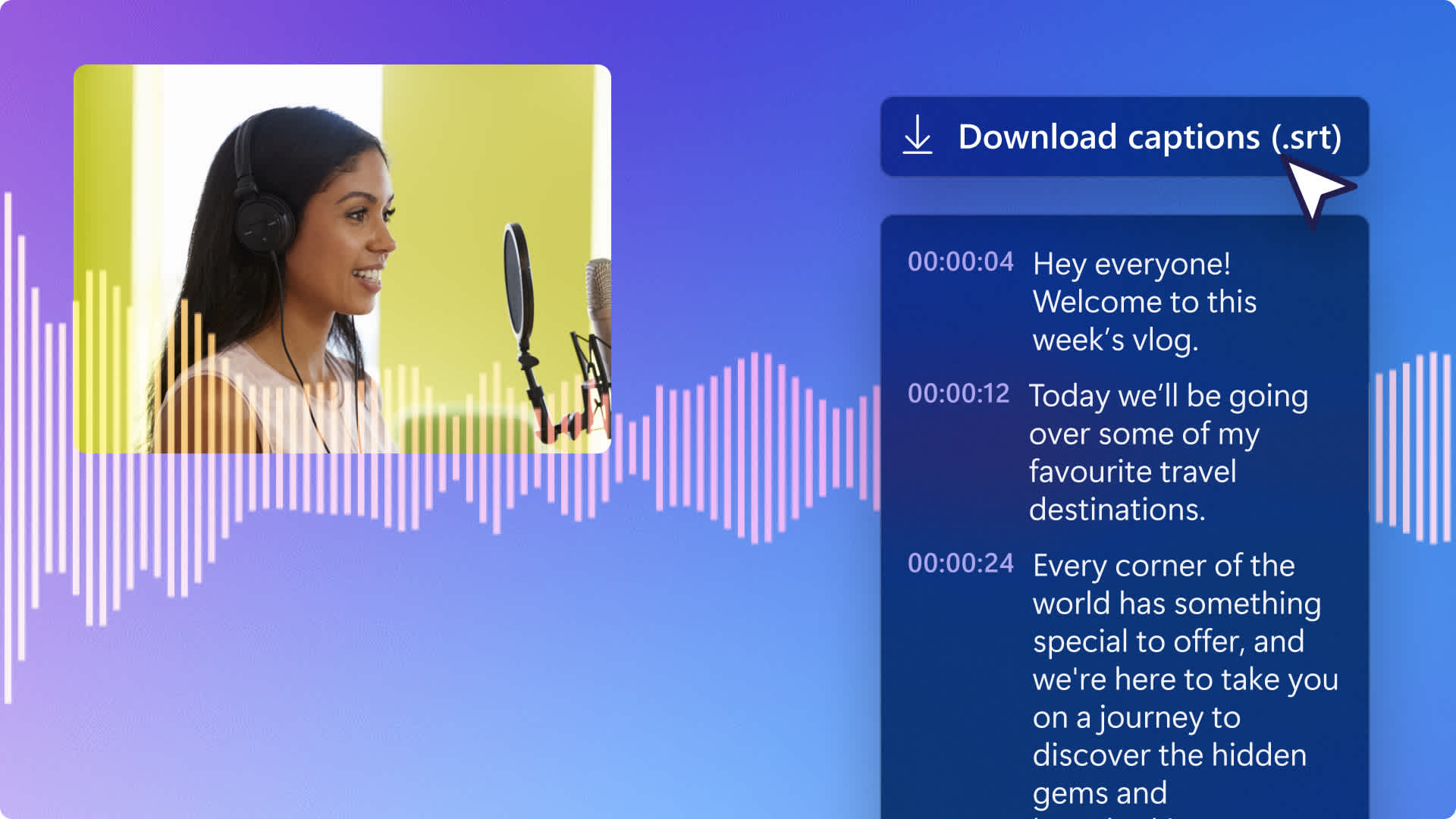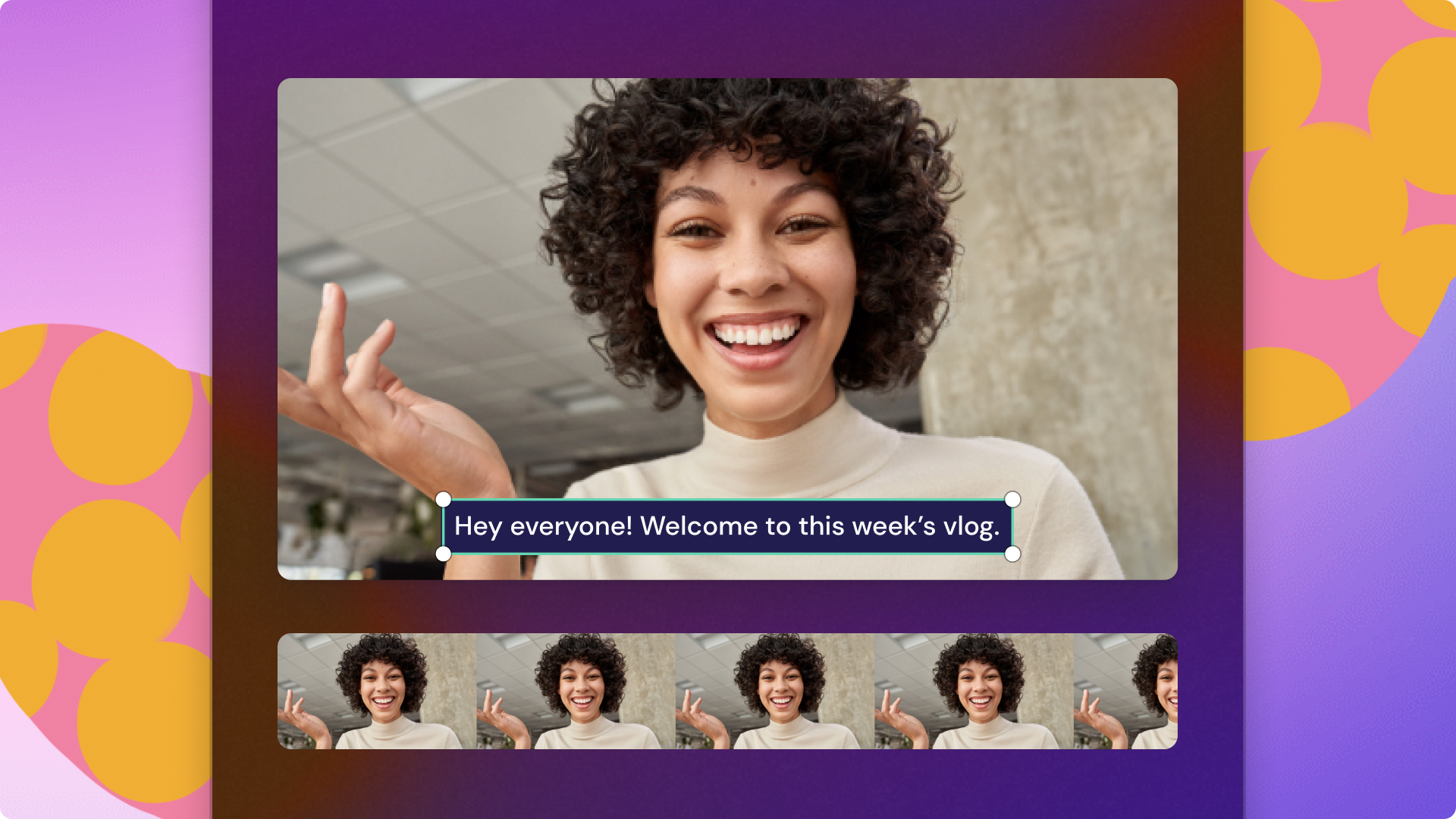Heads up! This content is relevant for Clipchamp for personal accounts. Try this link If you're looking for information about Clipchamp for work accounts.
On this page
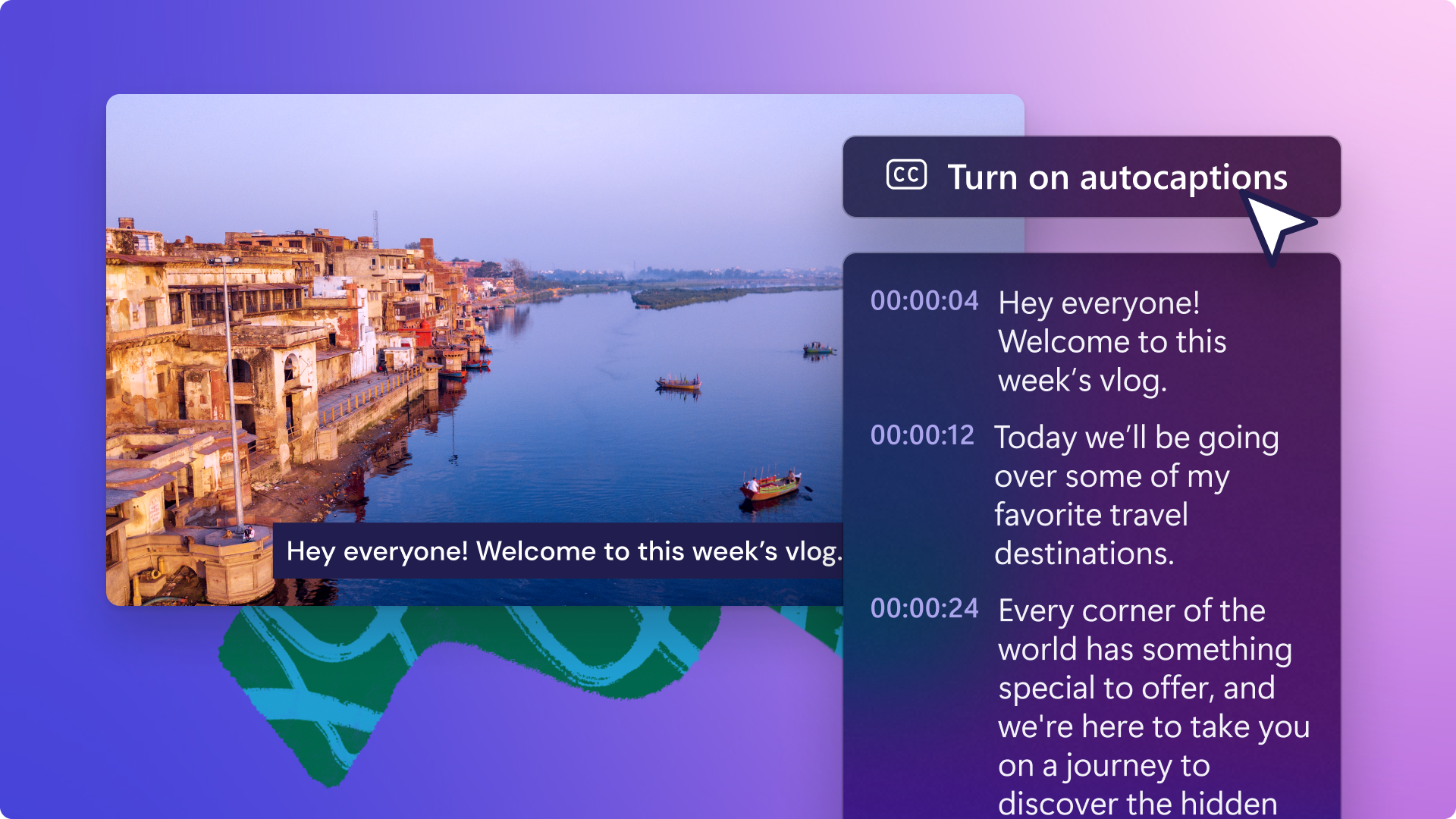
Want to make your videos more accessible or easier to follow on mute? Quickly and easily generate real-time captions through our AI powered autocaptions feature. Using smart voice detection technology, autocaptions lets you generate subtitles and transcribe any video with no typing required.
Explore how to use the autocaptions feature and download SRT files for free with Clipchamp.
How to use autocaptions
Step 1. Import and add your video to the timeline
To import your own videos, photos, and audio, click on the import media button in the your media tab on the toolbar to browse your computer files, or connect your OneDrive. You can also record a video directly in the editor using our webcam recorder in the record & create tab on the toolbar.
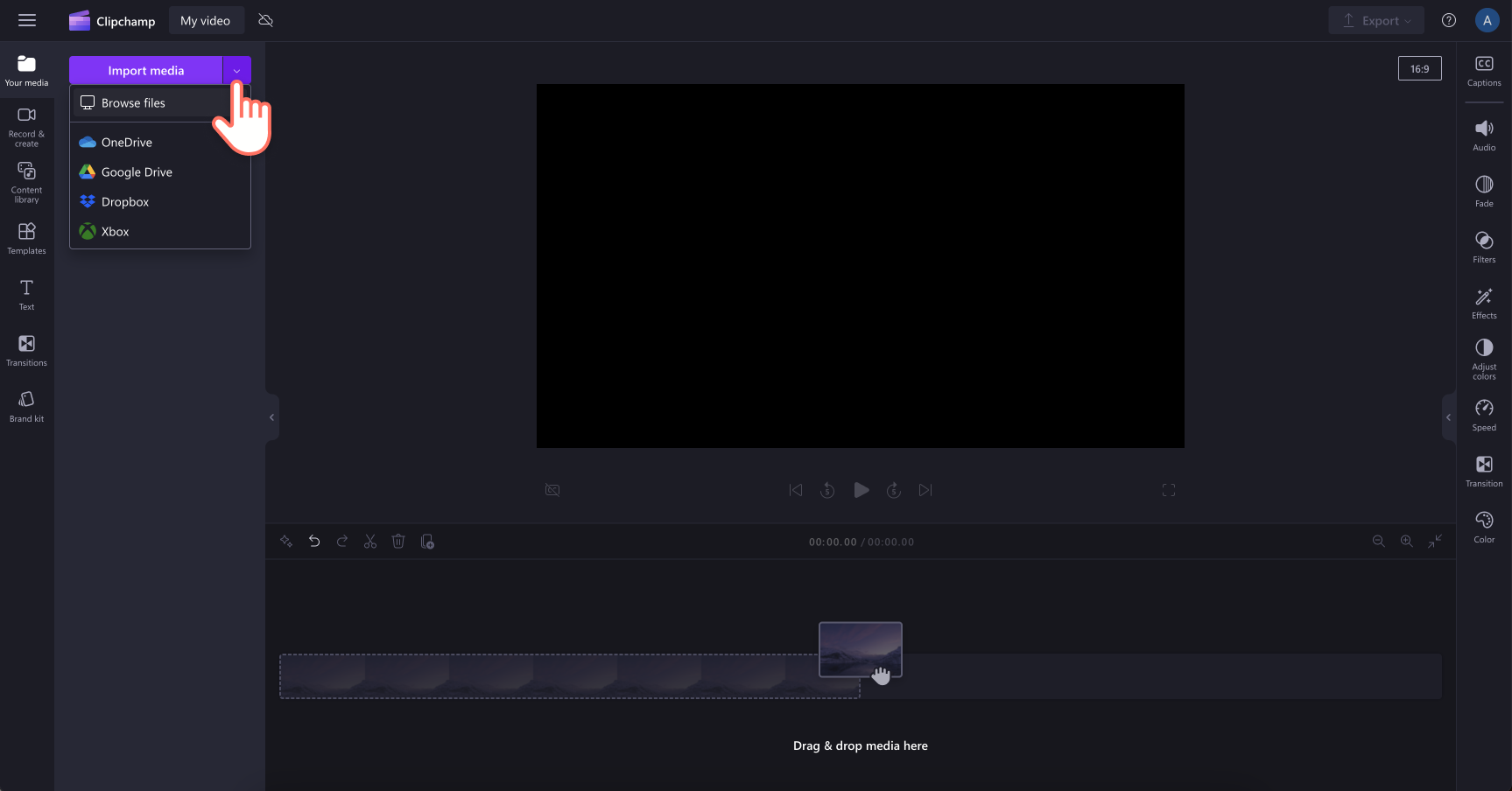
Next, drag and drop your video onto the timeline.
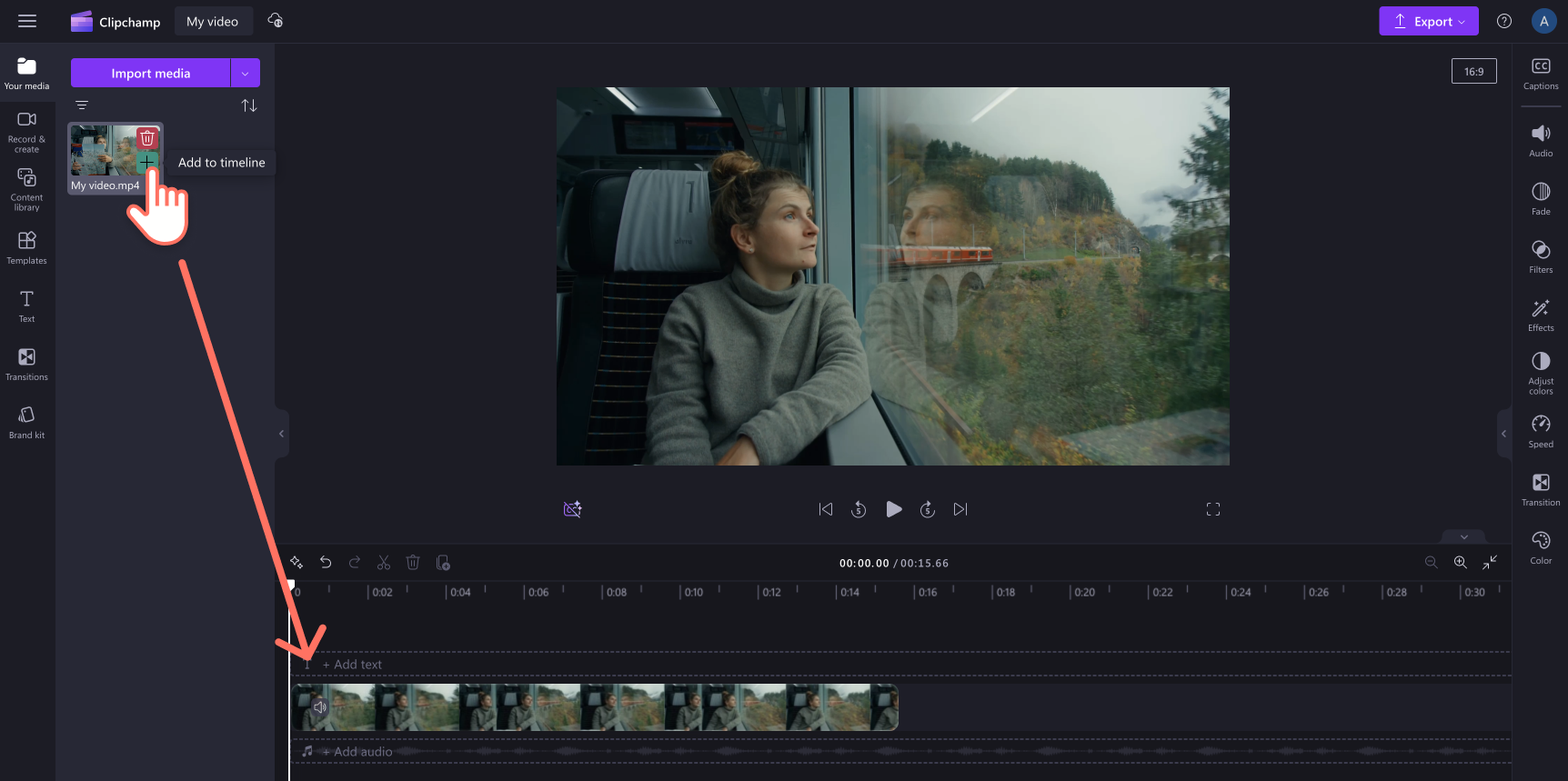
Step 2. Add captions to your video
To use the autocaptions feature, click on the captions tab on the property panel then click on the transcribe media button.
Note: The autocaptions feature is compatible with videos and audio files that include voice. Any audio that doesn't include voice will not be eligible for captions.
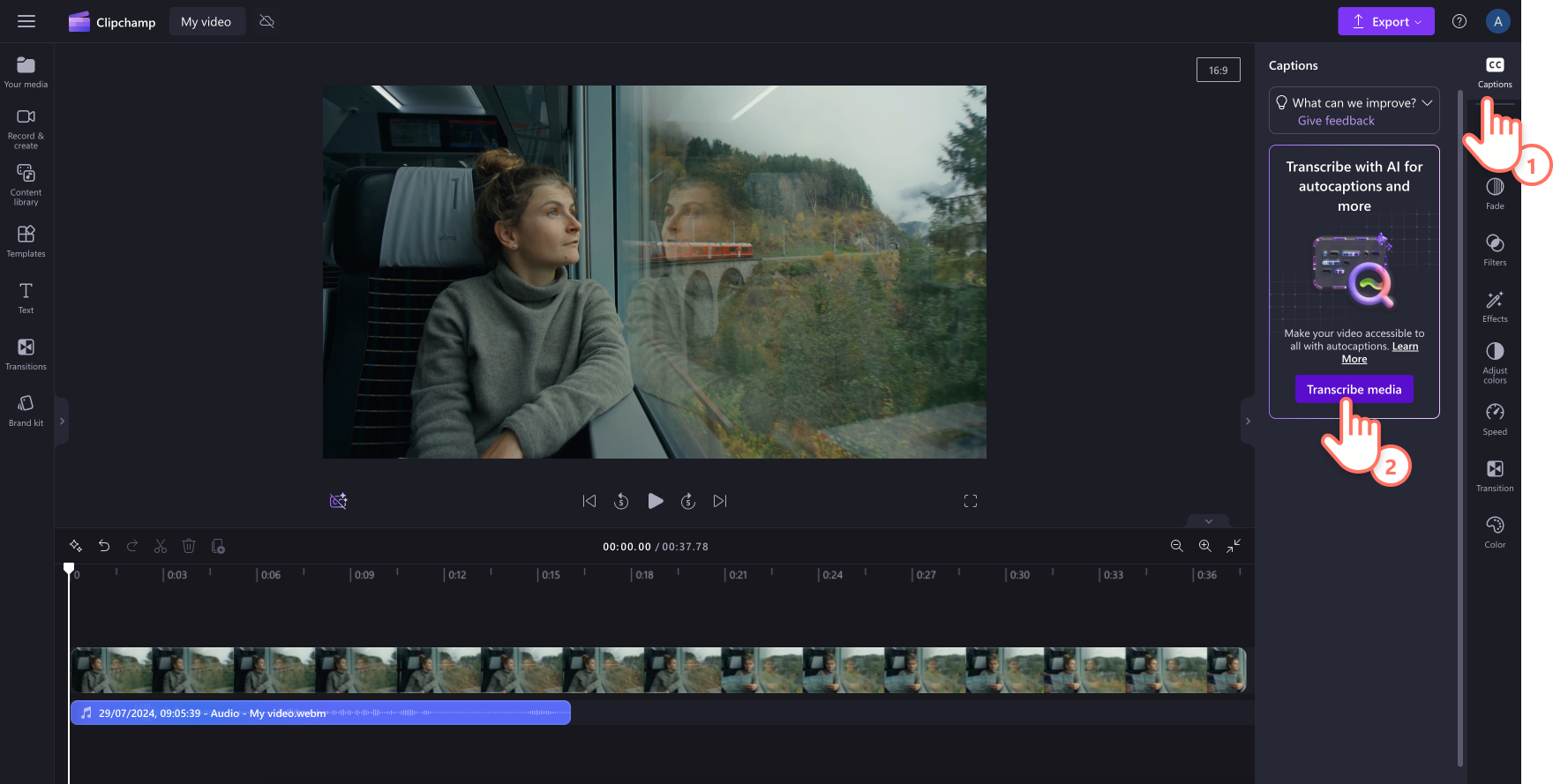
A popup window will appear with transcription options. Select the language you would like to use throughout your video, and check the box to filter any profanity and offensive language. When you're ready to continue, click on the transcribe media button.
You can also click on the cancel button if you wish to exit the popup window.
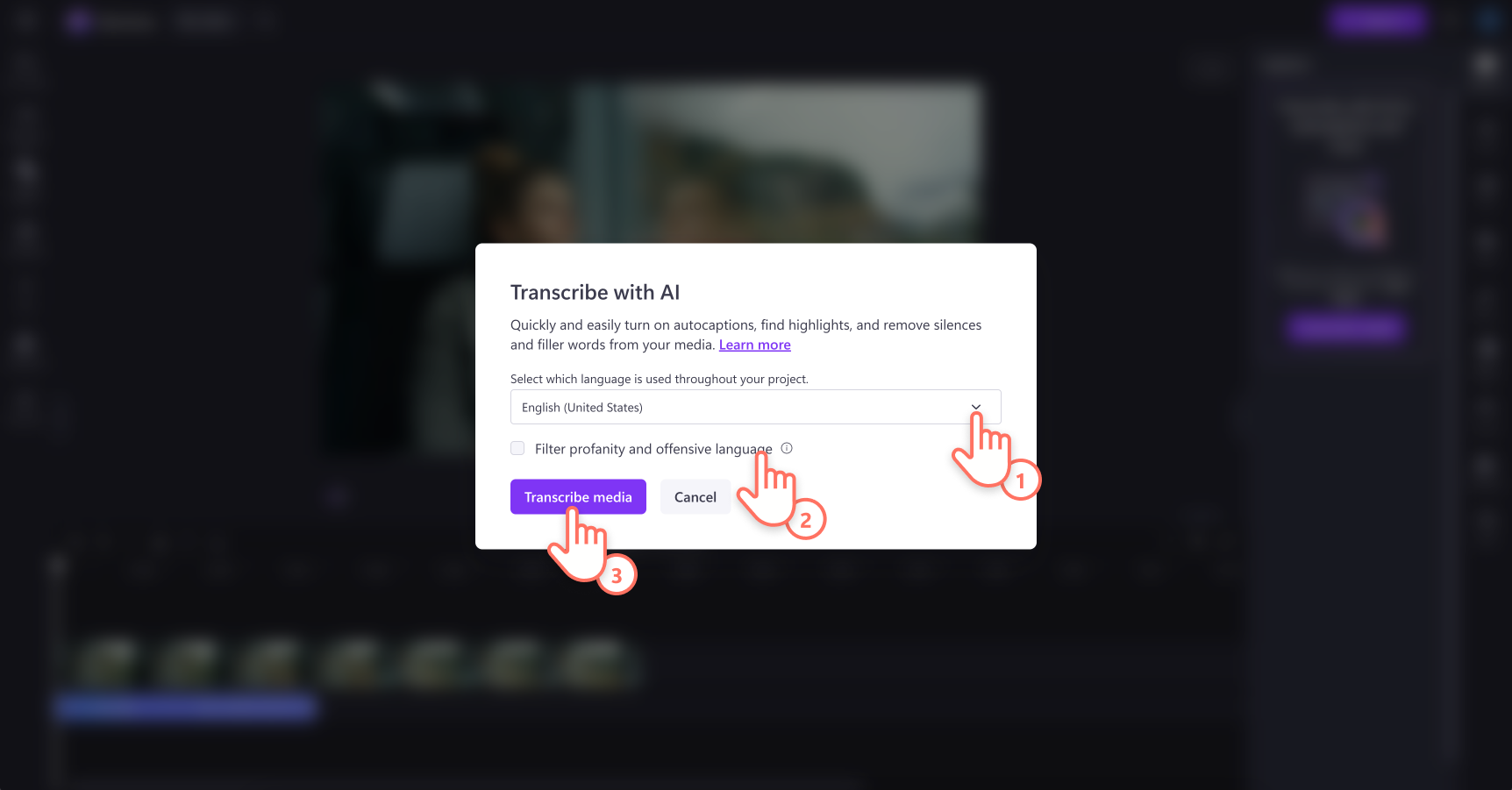
When you automatically return to the editor, you'll see your subtitle text generating in the captions tab on the property panel. The autocaption generation time will depend on your internet connection, speed, and the length of your video.

Once your captions successfully load, a video transcript will appear in the transcript section of the captions tab on the property panel. Your captions will also appear on the video preview window.

Step 3. Preview and save your video in HD
Before saving your video, make sure to preview by clicking on the play button. When you’re ready to save, click on the export button and select a video resolution.

How to edit video transcript and customize appearance
Editing the video transcript
If a word is misspelled or incorrect in the video transcript, click on the specific word within the transcript text then rewrite over it.

Editing the appearance of your captions
To edit the appearance of your subtitles, click the captions text box on the video preview. This will open up different options on the property panel. Next, click on the text tab on the property panel. Here, you can edit the font, size, alignment, and colors.
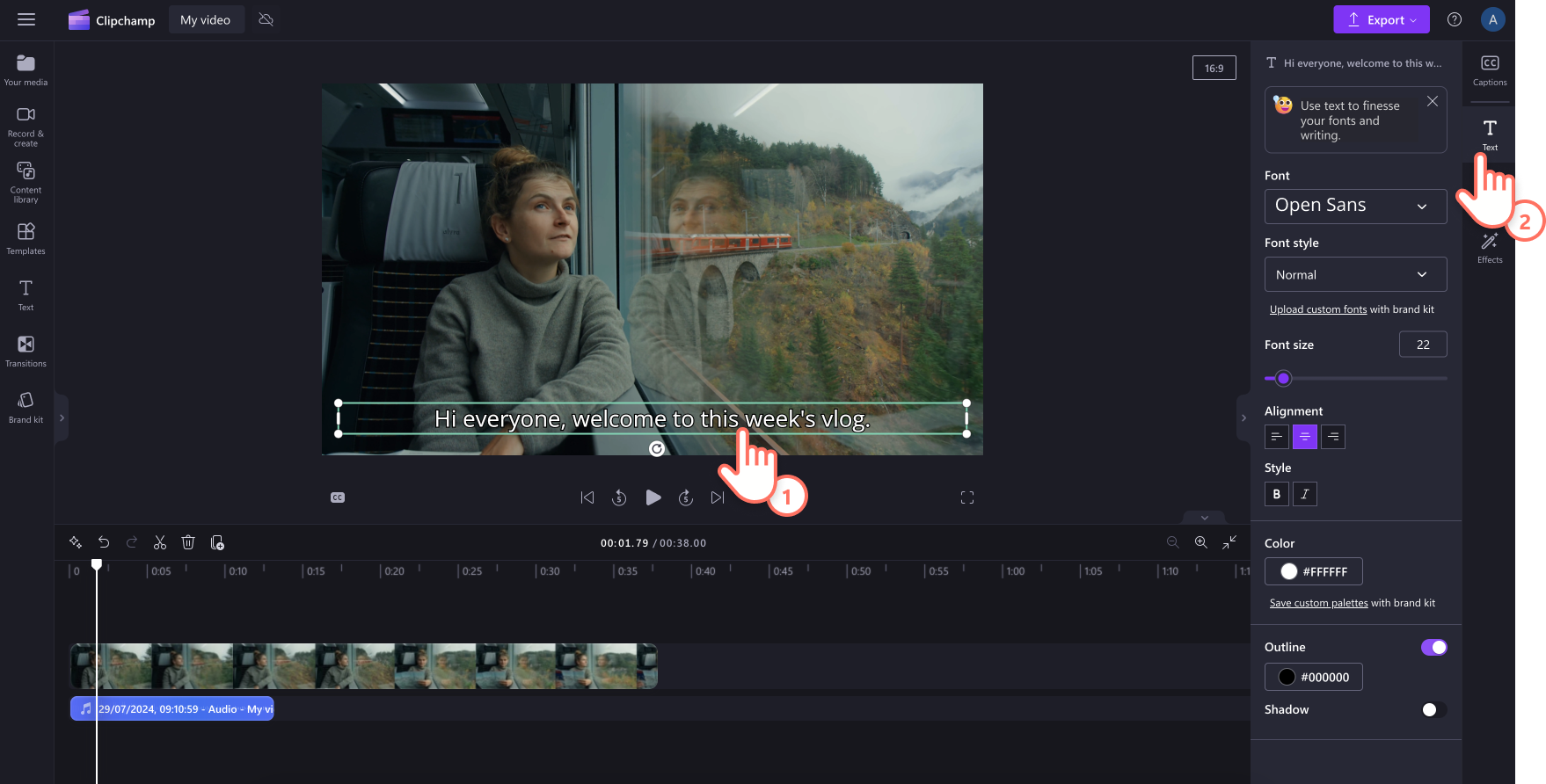
You can also add fades, effects, and adjust the colors of your captions using the tabs on the property panel. If you add any effects to your captions, make sure they're still clear and readable for viewers.
How to download the SRT file from your autocaptions
SRT is a standard format for representing subtitles, also known as SubRip subtitle file format. SRT files give you the option to auto add subtitles to a video after it’s produced.
Download your SRT file by clicking on captions tab on the property panel, then select the download captions button. Your video transcript will automatically download to your device. Downloading your video's transcript is the perfect addition to any PowerPoint presentation or video slideshow to further help your viewers.
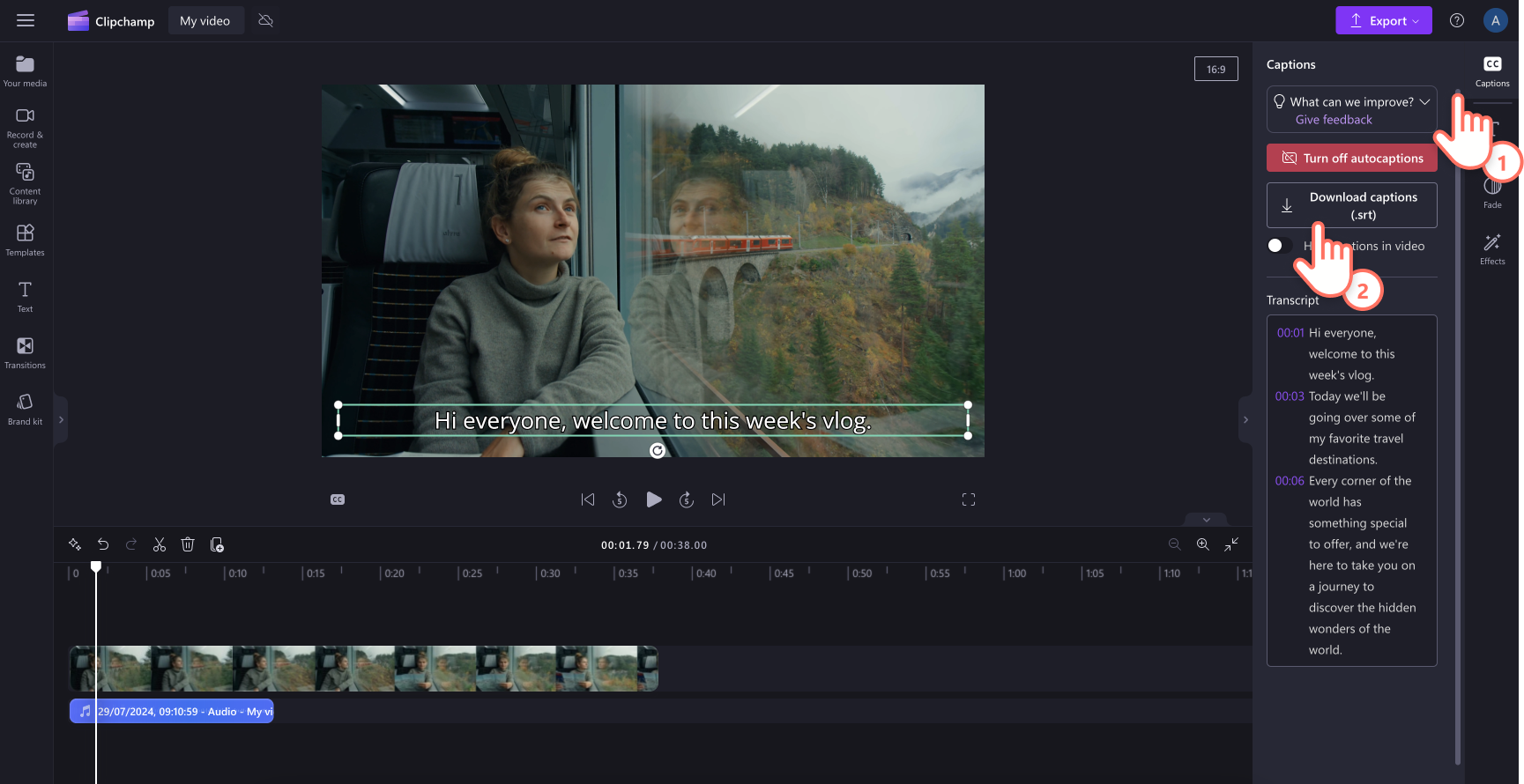
How to turn off autocaptions on your video
To remove captions from your video, simply click on the turn off autocaptions button in the captions tab on the property panel. The captions will be removed from your video and you can still export your video without captions.
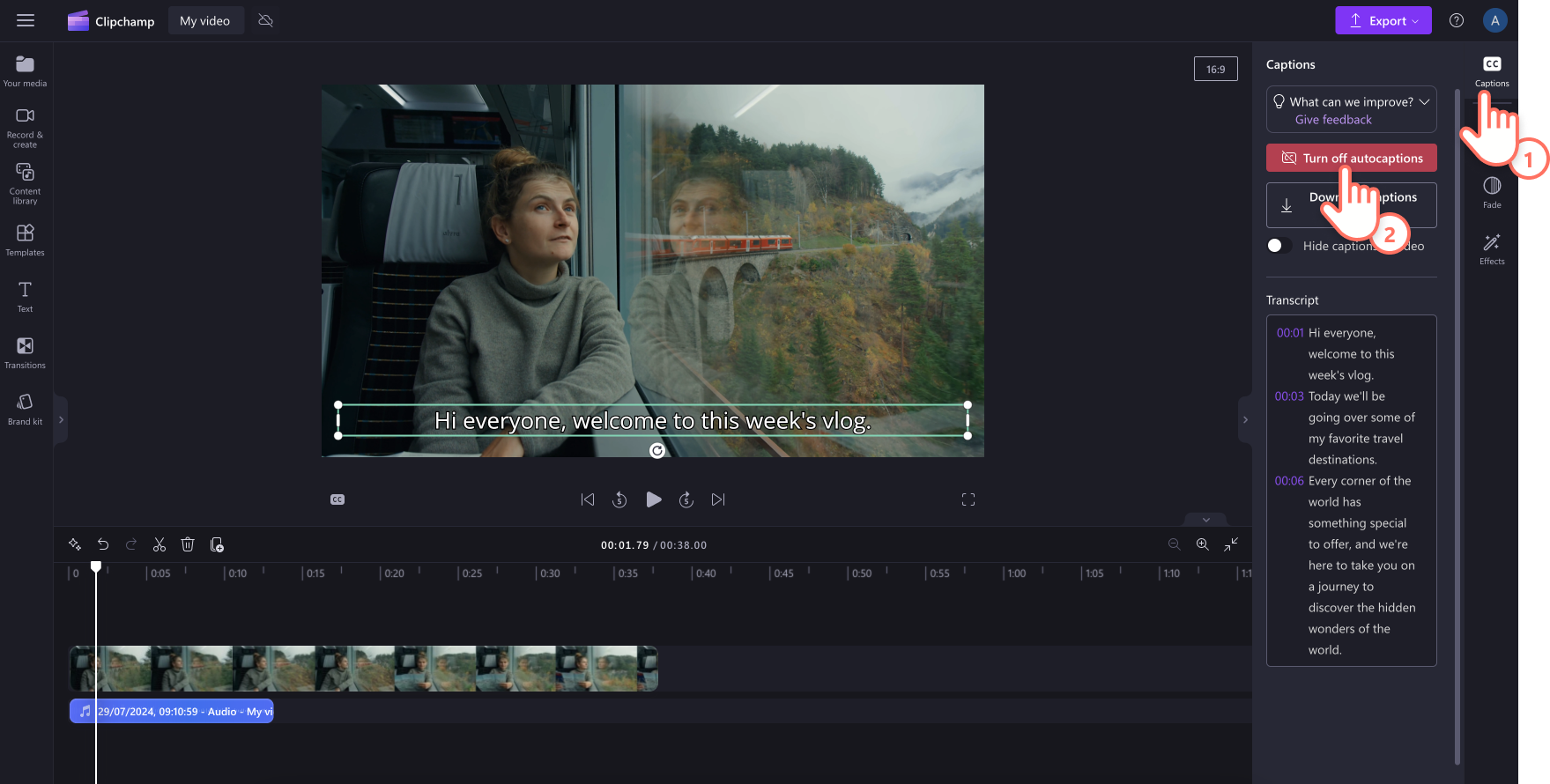
How to hide autocaptions on your video
Hide captions on your video by clicking on the hide captions in video toggle. This will hide the captions from your video preview, but keep the transcript in the captions tab.
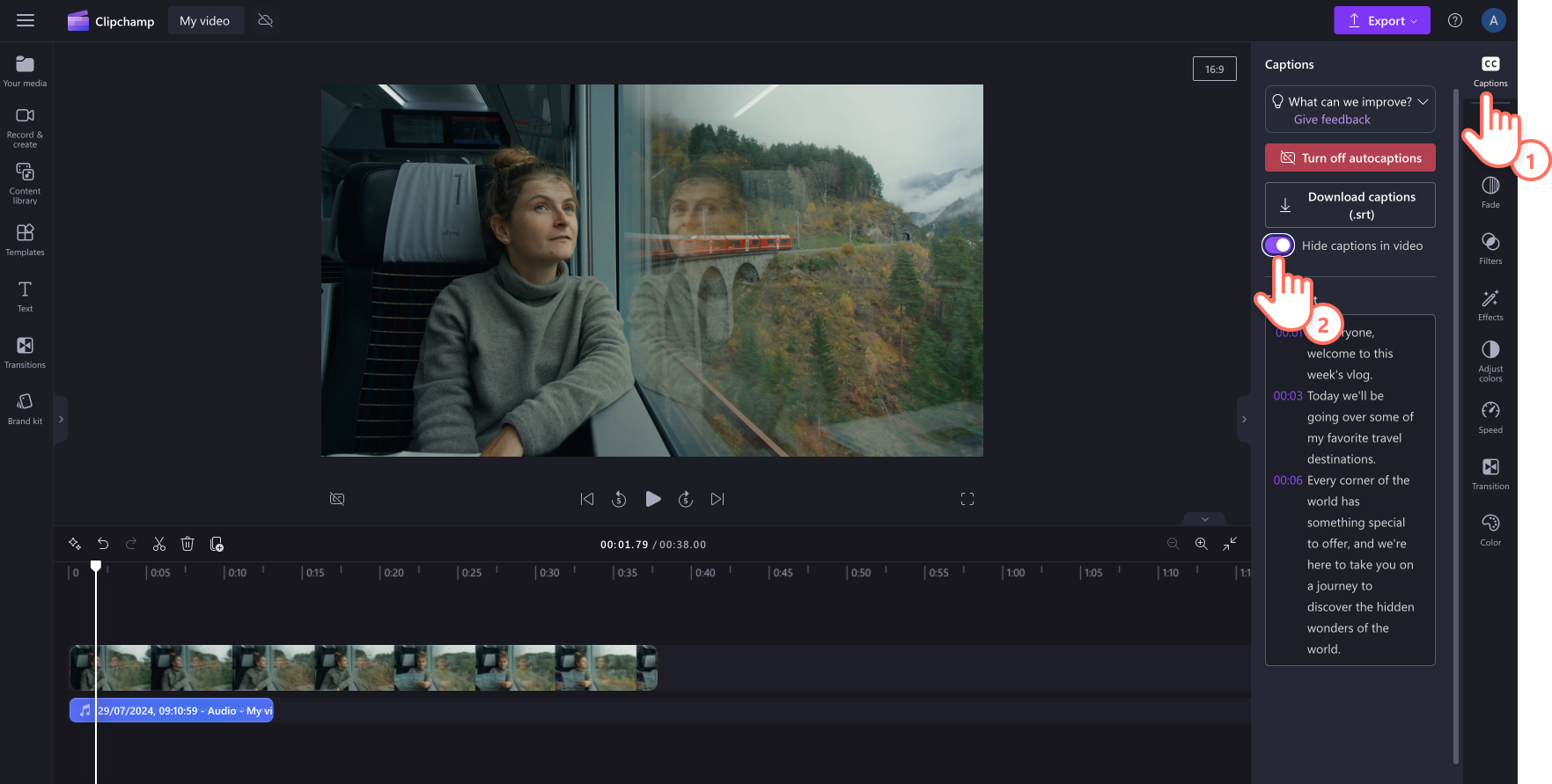
For more help, check out our YouTube tutorial.
Frequently asked questions
Are autocaptions free for all users?
Yes. Autocaptions is free for all users, including free users and paid subscribers.
What languages does autocaptions support?
There are many languages available to choose from. You can take a look at our full list of languages here. Currently, we only support a single language for each video.
Who has access to this data?
No one has access to the data. Microsoft Automatic Speech Recognition involves no human intervention, meaning no one will have access to the audio at any time. For more help with autocaptions, please refer to our help article.
Does Clipchamp store any caption data?
Yes. Caption data is stored with your Clipchamp video, which can only be accessed by you.
If I don't want Clipchamp to process this data, can I prevent it?
Do not turn on the autocaptions feature if you don’t want Clipchamp to process any data.
For more video accessibility options, take a look at ASL sticker overlays.
Start editing today with the Clipchamp video edior or download the Microsoft Clipchamp Windows app.
